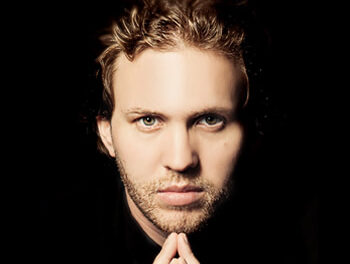Yes, the holiday season is upon us, and it’s a fact that, for twenty-five years, in the Triangle area of North Carolina, no holiday season has been truly complete without a concert (or two) by the Choral Society of Durham under the leadership of Rodney Wynkoop. Did we say “twenty-five years”? Yes, the maestro took the helm in 1986 – and the fact that he still looks like a very young person, full of energy and enthusiasm, must stem from all that good arm-waving exercise in front of all the outstanding choruses he leads, chief among them the big (150+ members) Durham-based choir.
For this year’s winter concerts,* Wynkoop and the CSD opted for a very big deal, indeed – the entire Christmas Oratorio, S.248, of J.S. Bach – six cantatas, actually, for the nativity period, the genesis of which Susan Dakin lucidly details in an excellent program note. The work has been done, occasionally, in one fell swoop, but it makes for a long sit and is a big challenge for the artists, so giving it in two sections makes sense, and that was the solution in Durham’s Duke Chapel, the region’s most awe-inspiring venue (and one of the most challenging, too, in terms of acoustics).
Prior to the Bach the chorus offered a brief sequence of six German carols, mostly in contemporary arrangements and all but one a cappella. These were related to the main work in their Germanic origins but with one brief exception no German was heard in them – they were performed in English and Latin instead. All are familiar, but the settings surely were, to many in attendance, new and appealing. These carols were “Come thou Redeemer of the earth,” “Lo, how a rose,” “Joseph, my dear Joseph,” “Silent night,” “The three kings,” and “In sweet jubilation.” The standout here was the remarkable Cornelius-Atkins version of “The three kings” with the chorale, “How brightly shines the morning star,” but all were beautifully given.
The Bach is not your typical oratorio. The choral parts are significant, but as in the other cantatas there’s a vast amount of work for the soloists. Those included two CSD veterans – Krista Rivers, mezzo-soprano, and Duke alum Jason McStoots, tenor – and two newcomers – soprano Kathryn Mueller and bass-baritone Sumner Thompson. All made significant contributions. The soprano seemed a bit underpowered at the outset but quickly warmed to the tasks at hand. Rivers, heard here last in 9/11 observations, was consistently engaging, as were both men. McStoots has a light, clear voice that he uses with impressive skill and artistry – one could have taken dictation of the texts he sang, so well were they projected. And while Thompson was not always terribly subtle, his vocalism was steady and stylistically consistent with the work of the others.
Highlights among the many outstanding solo passages were the alto’s “Bereite dich, Zion” (Cantata 1), the tenor aria “Frohe Hirten” and the alto’s “Schlafe, mein Liebster” (Cantata 2), and the duet for soprano and bass, “Herr, dein Mitleid” (Cantata 3) – but there are a total of 35 numbers (one of which is repeated) in this half of the Oratorio, so these really are just highlights!
The solo artists stood on an elevated platform alongside the conductor. Behind them was an excellent (modern) orchestra of 30 or so players, headed by concertmaster Richard Luby and with many of our region’s finest instrumentalists. The winds and brass were particularly noteworthy, and the continuo parts were expertly realized. The band had but a single moment in the sun for itself – in the Sinfonia for the second part – but made its presence known throughout the evening in many diverse and subtle ways.
The CSD is a regional treasure, one that is always at the top of the vocal game. In the choruses and the many chorales the sound was rich and full and – from the fourth row – more than sufficiently clear. Once or twice the combination of all those voices and the orchestra going at full tilt resulted in some blurring, but with texts and translations in hand the listeners can have had few complaints.
The figure around which the all the artists coalesced was Wynkoop, master of choirs, soloists, orchestras, and this venue, too, in musical terms. He’s enhanced and elevated the choral arts hereabouts for a quarter of a century. Let us pray for many more happy and productive years!
The Bach is a huge and demanding work, challenging for all who are touched by it as performers or listeners. That it is so rarely done is all the more reason for those who heard the first half to return to Duke Chapel for the rest of it. And if perchance you missed the opener, then the second half is nonetheless totally worthwhile as a stand-alone concert.
*Part 2 of the Christmas Oratorio will be given on 12/11 at 4 p.m. For details, see the sidebar.











